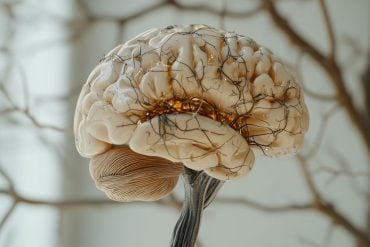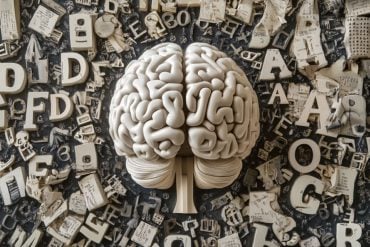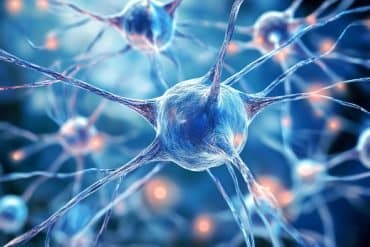Summary: A new study reports faces of people we believe to be more competent are also perceived to be more masculine.
Source: APS.
Faces that are seen as competent are also perceived as more masculine, according to research published in Psychological Science.
“Our research sheds light on the pernicious gender bias in how we perceive others — we judge masculine looking people as competent, a judgment that can affect our leadership choices,” explains psychology researcher DongWon Oh of Princeton University, first author on the research.
Oh and coauthors Elinor A. Buck and Alexander Todorov were interested in identifying the “visual ingredients” that influence how we perceive competence from individuals’ appearance.
To do this, the researchers used a computational model of competence that they had established in previous research. Using participant ratings of many different faces, the researchers identified the parameters that were most reliably associated with impressions of competence. They then built a model that allowed them to digitally alter face stimuli according to these specific parameters, producing faces that varied in perceived competence.
In one online experiment, the researchers used this model to present 33 participants with face stimuli that varied in competence. Some participants rated how competent the faces were, while others rated their attractiveness. The results showed that the faces designed to look more competent were rated as such, and they were also rated as more attractive, consistent with the “attractiveness halo” found in previous research.
But Oh and colleagues suspected that there were probably other components of appearance that signal competence.
“Using the computational methods we developed for visualizing appearance stereotypes, we can literally remove the attractiveness of the competent-looking faces,” says Oh. “We can then test whether ‘competent’ faces still appear competent and inspect what visual properties other than attractiveness drive the competence impressions.”
Using this new model, the researchers found that participants perceived more competent faces as more confident and more masculine, impressions that are not explained by attractiveness.
Another online experiment revealed a clear gender bias: When participants were asked to identify faces as either or female, they tended to rate more competent faces as male and less competent faces as female.
Together, these findings suggest that competence and masculinity are correlated components of first impressions based on appearance.
To investigate whether this relationship operates similarly for male faces and female faces, the researchers manipulated photorealistic images of male and female faces so that they varied in masculinity. They randomly assigned 250 online participants to rate the competence of either male faces or female faces.
Again, the data suggested a gender bias in first impressions: As male faces increased in masculinity, so did their perceived competence. For female faces, this relationship only held up to a point, after which more masculine female faces were actually perceived as less competent.

This is noteworthy because impressions of competence influence who we choose as our leaders: Research has shown that individuals with more competent-looking faces are more likely to be elected as high-ranking politicians such as US senators and as the heads of large companies.
“Problematically, how competent someone appears does not guarantee their actual competence,” Oh notes. “Needless to say, these gender biases pose a threat to social justice, creating unfair environments for everyone.”
The researchers hope to expand on this research, exploring the origins of this gender bias and how the bias might be mitigated. In addition, they are investigating whether there are systematic differences in the impressions we have of male and female faces.
Source: APS
Publisher: Organized by NeuroscienceNews.com.
Image Source: NeuroscienceNews.com image is adapted from the APS news release.
Original Research: Abstract for “Revealing Hidden Gender Biases in Competence Impressions of Faces” by DongWon Oh, Elinor A. Buck, and Alexander Todorov in Psychological Science. Published November 9 2018.
doi:10.1177/0956797618813092
[cbtabs][cbtab title=”MLA”]APS”Gender Bias Sways How We Perceive Competence in Faces.” NeuroscienceNews. NeuroscienceNews, 8 December 2018.
<https://neurosciencenews.com/gender-bias-faces-10313/>.[/cbtab][cbtab title=”APA”]APS(2018, December 8). Gender Bias Sways How We Perceive Competence in Faces. NeuroscienceNews. Retrieved December 8, 2018 from https://neurosciencenews.com/gender-bias-faces-10313/[/cbtab][cbtab title=”Chicago”]APS”Gender Bias Sways How We Perceive Competence in Faces.” https://neurosciencenews.com/gender-bias-faces-10313/ (accessed December 8, 2018).[/cbtab][/cbtabs]
Abstract
Revealing Hidden Gender Biases in Competence Impressions of Faces
Competence impressions from faces affect important decisions, such as hiring and voting. Here, using data-driven computational models, we identified the components of the competence stereotype. Faces manipulated by a competence model varied in attractiveness (Experiment 1a). However, faces could be manipulated on perceived competence controlling for attractiveness (Experiment 1b); moreover, faces perceived as more competent but not attractive were also perceived as more confident and masculine, suggesting a bias to perceive male faces as more competent than female faces (Experiment 2). Correspondingly, faces manipulated to appear competent but not attractive were more likely to be classified as male (Experiment 3). When masculinity cues that induced competence impressions were applied to real-life images, these cues were more effective on male faces (Experiment 4). These findings suggest that the main components of competence impressions are attractiveness, confidence, and masculinity, and they reveal gender biases in how we form important impressions of other people.







